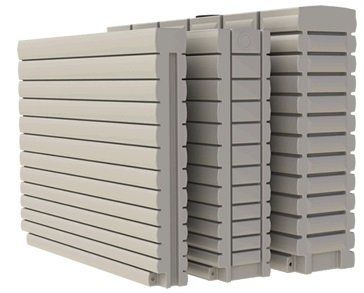Comprehending the Significance of Rain Tanks in Drought-Prone Regions for Water Security
In areas vulnerable to prolonged dry spells, the role of rain storage tanks in strengthening water safety is a topic of expanding significance. As areas come to grips with the challenges of water shortage, understanding the relevance of these tanks goes beyond plain collection of rainwater. Rain tanks function as a vital device in mitigating the effect of water scarcities by offering a lasting source of water for different demands. Nevertheless, truth worth of rainwater storage tanks expands far past plain storage; it includes resilience-building actions and the promotion of long-lasting water preservation techniques. This complex approach to water safety and security warrants a better exam of the role rainwater tanks play in making sure a dependable supply of water throughout times of dry spell.
Advantages of Rain Containers
Making use of rain containers uses a lasting option for enhancing supply of water and improving water safety and security in domestic and commercial settings. Among the key advantages of rainwater tanks is their ability to lower dependence on keys supply of water. By capturing and storing rain that drops on rooftops, this alternative resource can be made use of for different non-potable purposes such as watering, purging bathrooms, and washing garments. This not only conserves cured alcohol consumption water but also decreases water expenses for users.

Rain Harvesting Strategies
Rain collecting methods encompass an array of techniques designed to successfully gather and store rain for numerous functions, adding to water preservation and sustainability. One more preferred technique is the use of above-ground or below ground storage space containers to store rain for later use.

Additionally, rainfall yards and permeable pavements are cutting-edge techniques that include landscape design or paving surface areas in a manner that enables rain to percolate right into the ground, replenishing groundwater reserves. Furthermore, shape farming and terracing are farming practices that assist record rain and prevent soil erosion in uneven surface. By applying these diverse rainwater harvesting techniques, neighborhoods can improve water protection and resilience in drought-prone regions while promoting sustainable water management methods.
Value of Water Protection
Ensuring dependable access to clean and sufficient water resources is critical for sustaining human health and wellness, economic advancement, and environmental wellness. Water safety and security is an important element of social durability, especially in regions vulnerable to droughts and water scarcity. Sufficient water safety and security encompasses various measurements, consisting of schedule, high quality, and availability of water for residential, agricultural, industrial, and environmental demands.
Water protection plays a critical duty in promoting public health and wellness by decreasing the prevalence of waterborne conditions and making certain hygiene centers. Economically, water security is essential for farming efficiency, industrial procedures, and total economic growth. Slimline water tanks. Moreover, water protection is carefully linked to ecological sustainability, as it supports communities, biodiversity, and overall eco-friendly balance.
In drought-prone regions, water security ends up being a lot more crucial as a result of the increased threat of water lacks. Applying techniques like rain harvesting, water recycling, and effective water monitoring practices can dramatically enhance water protection in these areas. By focusing on water security, neighborhoods can much better withstand the effects of climate modification, populace development, and other obstacles that threaten water accessibility.
Enhancing Water Strength
With increasing worldwide water obstacles, building strength in water systems has actually come to be an important emphasis for lasting development efforts. Enhancing water durability entails applying strategies to make sure water schedule and top quality despite changing environmental problems, such as droughts, floods, and pollution.
One key element of improving water durability is advertising making use of rain containers in drought-prone areas - Slimline water tanks. Rain containers function as a reliable methods of recording and saving rain for later usage, lowering dependence on limited freshwater resources throughout completely dry periods. By integrating rainwater harvesting systems into water administration plans, neighborhoods can enhance their ability to withstand water scarcity and maintain water security

Lasting Water Conservation
In the middle of intensifying water obstacles, the sensible management of water resources with lasting preservation techniques is important for making sure lasting ecological security and social well-being. Sustainable water conservation entails the effective use of water sources to satisfy present demands without endangering the capacity of future generations to fulfill their very own needs. By implementing strategies such as rainwater harvesting, greywater recycling, and water-efficient technologies, communities can decrease water wastage and minimize pressure on freshwater sources.
Additionally, sustainable water conservation practices add to ecosystem wellness by keeping ample water degrees in rivers, lakes, and marshes, supporting biodiversity, and preserving natural environments. These techniques likewise play a vital function in alleviating the effects of climate change by aiding to adjust to altering precipitation patterns and water useful reference availability.

Verdict
Finally, rain containers play an essential function in boosting water safety and security and strength in drought-prone areas. By using rainwater harvesting techniques, communities can reduce their reliance on conventional water resources and advertise lasting water preservation practices. This not only helps reduce the effects of water deficiency throughout dry spells yet also contributes to long-lasting water safety and strength despite environment adjustment obstacles.